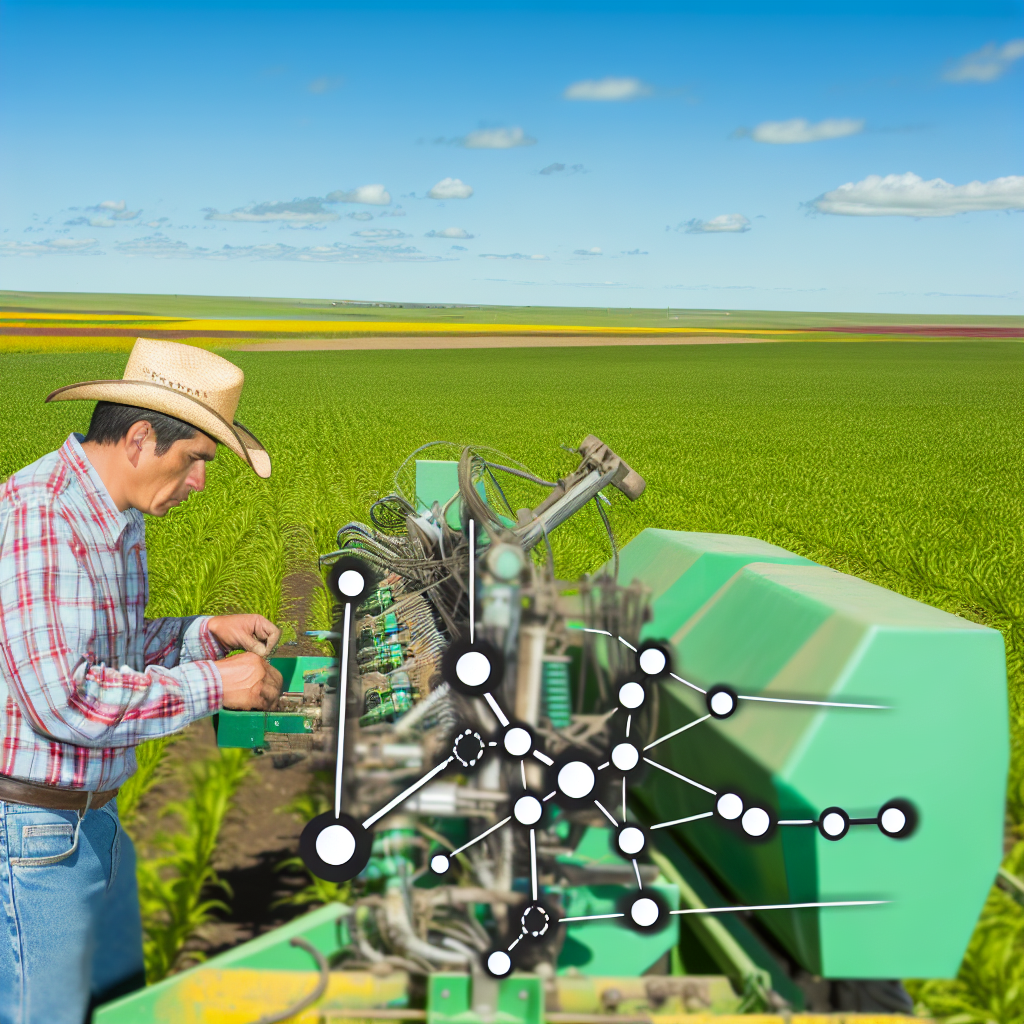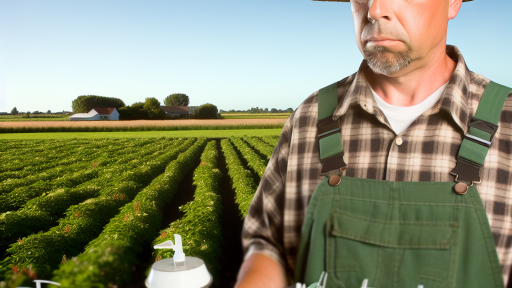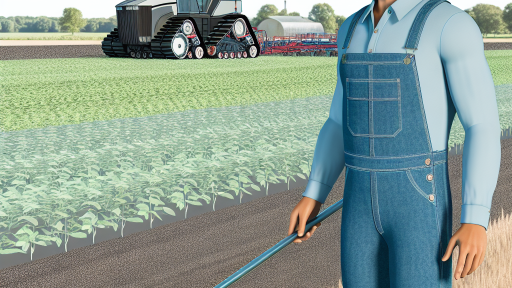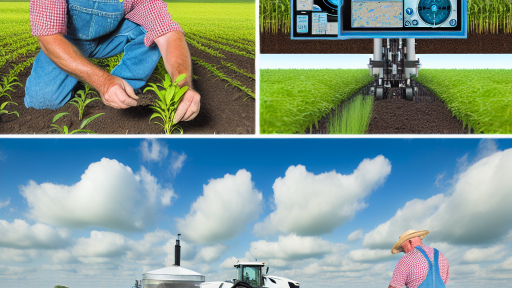Introduction to Carbon Sequestration
Definition and Importance for Agriculture
Carbon sequestration refers to the process of capturing and storing atmospheric carbon dioxide.
This technique plays a significant role in mitigating climate change.
Modern agriculture must adopt strategies that reduce greenhouse gas emissions.
By incorporating carbon sequestration, farms can enhance soil health and crop yields.
Healthy soil captures more carbon from the atmosphere, benefiting the entire ecosystem.
Farmers can utilize various practices to increase carbon storage in their fields.
These methods not only improve sustainability but also enhance farm resilience.
Effective carbon sequestration can lead to economic benefits for farmers as well.
Implementing these technologies attracts environmentally conscious consumers.
Moreover, carbon credits can provide additional revenue streams for farmers.
Thus, understanding carbon sequestration is crucial for modern farming practices.
It offers tools and techniques for tackling both environmental and economic challenges.
As agriculture evolves, carbon sequestration technologies will be vital for future success.
Types of Carbon Sequestration Technologies
Introduction to Carbon Sequestration
Carbon sequestration technology captures and stores carbon dioxide from the atmosphere.
This process helps mitigate climate change impacts.
Transform Your Agribusiness
Unlock your farm's potential with expert advice tailored to your needs. Get actionable steps that drive real results.
Get StartedFarmers can adopt these technologies to improve sustainability.
Biological Carbon Sequestration
Biological carbon sequestration relies on natural processes.
Healthy forests, grasslands, and soils store carbon effectively.
Plants capture carbon dioxide through photosynthesis.
When they die, their biomass becomes part of the soil carbon pool.
Agricultural Practices
Farmers can implement practices that enhance soil carbon storage.
- Cover cropping prevents soil erosion and enhances organic matter.
- No-till farming minimizes disturbance to soil structure.
- Crop rotation encourages biodiversity and enhances soil nutrients.
Technological Carbon Sequestration
Technological solutions offer innovative approaches to carbon capture.
These methods capture carbon emissions directly from industrial processes.
They then either store it underground or convert it into products.
Direct Air Capture
Direct air capture (DAC) is an emerging technology.
It extracts CO2 directly from the ambient air.
DAC units can be installed on farms to capture emissions effectively.
Soil Carbon Management Technologies
These technologies enhance soil’s natural ability to store carbon.
- Carbon farming techniques optimize resource use.
- Smart irrigation systems reduce water waste and soil degradation.
- Biochar application improves soil health and sequesters carbon.
Comparative Analysis of Technologies
Different carbon sequestration technologies come with their benefits and challenges.
Biological methods are often cost-effective and environmentally friendly.
Technological methods may require substantial investment and maintenance.
Effectiveness and Feasibility
Biological carbon sequestration generally requires less technology and infrastructure.
In contrast, technological methods may provide quicker results.
Farmers should evaluate their unique circumstances and resources.
Long-term Impact
The long-term impact of each method is also significant.
Biological methods can improve soil health and yield over time.
Technological solutions may provide a faster route to immediate carbon reductions.
Soil Carbon Sequestration: Methods and Best Practices for Farmers
Understanding Carbon Sequestration
Carbon sequestration involves capturing and storing atmospheric carbon dioxide.
This process plays a crucial role in reducing greenhouse gases.
Showcase Your Farming Business
Publish your professional farming services profile on our blog for a one-time fee of $200 and reach a dedicated audience of farmers and agribusiness owners.
Publish Your ProfileFarmers can significantly contribute to this effort through various methods.
Importance of Soil Health
Healthy soil acts as a carbon sink.
It stores more carbon compared to degraded soil.
Enhancing soil health improves agricultural productivity and resilience.
Effective Methods for Carbon Sequestration
Cover cropping is one effective method for carbon sequestration.
Cover crops protect the soil and enhance its organic matter content.
Another method includes conservation tillage, which minimizes soil disturbance.
Crop rotation and agroforestry also contribute positively to soil carbon levels.
Cover Cropping
Cover crops grow between main crops, preventing soil erosion.
They add organic matter as they decompose, enriching the soil.
Farmers can use species like clover or rye for optimal benefits.
Conservation Tillage
This practice reduces the amount of tillage performed each season.
Reducing tillage preserves soil structure and organic content.
Farmers can adopt no-till or reduced-till practices depending on their needs.
Crop Rotation
Crop rotation involves alternating different crops in sequential seasons.
This method disrupts pest cycles and prevents nutrient depletion.
Additionally, diverse root structures enhance soil carbon storage.
Agroforestry
Integrating trees into farming systems offers multiple benefits.
Trees capture carbon and improve biodiversity on farms.
They also provide shade and windbreaks for crops.
Best Practices for Farmers
Farmers should regularly monitor soil carbon levels.
Soil testing gives insights into nutrient availability and organic matter.
Additionally, adopting a holistic approach to farming maximizes benefits.
Continuous Education
Staying informed about the latest research on soil health is vital.
Farmers can attend workshops and conferences to learn from experts.
Collaboration with local agricultural institutions enhances knowledge sharing.
Community Involvement
Joining local farming groups fosters collaboration and support.
Farmers can exchange experiences and best practices with peers.
This community approach can lead to innovative solutions for carbon sequestration.
Learn More: Biodiversity’s Impact on Sustainable Food Production
Agroforestry as a Carbon Sequestration Strategy
Understanding Agroforestry
Agroforestry combines agriculture and forestry practices.
This method enhances biodiversity on farms.
It integrates trees, crops, and livestock into a single system.
Consequently, it improves soil health and structure.
Additionally, agroforestry captures atmospheric carbon dioxide.
Benefits of Agroforestry
Agroforestry provides multiple ecological benefits.
- It increases carbon storage in biomass and soil.
- It enhances ecosystem resilience against climate change.
- It improves water retention and reduces erosion.
- It supports wildlife habitat and biodiversity.
- Furthermore, it offers shade and windbreaks for crops.
Implementing Agroforestry on Modern Farms
Successfully implementing agroforestry requires planning.
Farmers should assess their land’s ecological conditions first.
Choosing appropriate tree species is crucial for success.
For instance, nitrogen-fixing trees can enhance soil fertility.
Showcase Your Farming Business
Publish your professional farming services profile on our blog for a one-time fee of $200 and reach a dedicated audience of farmers and agribusiness owners.
Publish Your ProfileNext, farmers must design their planting schemes thoughtfully.
It is essential to determine tree placement and spacing.
Challenges and Solutions
Adopting agroforestry presents certain challenges.
Incumbent farmers may resist changing traditional methods.
- Education and outreach can help ease this transition.
- Moreover, financial incentives can support new practices.
Farming with agroforestry requires time and commitment.
However, the long-term benefits outweigh initial hurdles.
Examples of Successful Agroforestry Systems
Many successful agroforestry systems exist across the globe.
In Brazil, the agroforestry systems of smallholder farmers are thriving.
They combine cocoa with shade-producing trees effectively.
In addition, farmers in Kenya implement alley cropping.
This method integrates crops between rows of trees.
Both examples demonstrate agroforestry’s potential to sequester carbon and enhance rural livelihoods.
See Related Content: 5 Sustainable Farming Techniques That Are Changing the Game
Biochar: Production, Uses, and its Role in Carbon Sequestration
Introduction to Biochar
Biochar is a stable form of carbon produced from organic materials.
It is made through a process called pyrolysis.
This process heats biomass in the absence of oxygen.
As a result, biochar retains valuable biological properties.
Production of Biochar
The production of biochar begins with selecting biomass feedstock.
Common feedstocks include agricultural residues, wood chips, and manures.
Once chosen, the biomass is dried to reduce moisture content.
Then, it is subjected to pyrolysis temperatures ranging from 300 to 700 degrees Celsius.
This high heat converts the material into biochar and bio-oil.
Efficient management of this process is crucial for quality.
Uses of Biochar
Biochar offers multiple benefits for modern farming.
First, it enhances soil fertility.
It improves water retention and nutrient availability.
Second, biochar aids in waste management.
Farmers can utilize agricultural by-products effectively.
Additionally, biochar has applications in carbon markets.
It can help farmers meet sustainability goals.
Role of Biochar in Carbon Sequestration
Biochar plays a significant role in carbon sequestration.
This process involves capturing carbon dioxide from the atmosphere.
Biochar locks carbon into a stable form, preventing its release.
Therefore, it mitigates climate change impacts.
Moreover, biochar helps build healthy soil ecosystems.
It encourages beneficial microbial activity, enhancing carbon storage.
Future Perspectives
The future of biochar technology looks promising.
Innovative research continues to explore new feedstock options.
Integration with other carbon farming practices is expanding.
Additionally, policymakers are beginning to support biochar initiatives.
Showcase Your Farming Business
Publish your professional farming services profile on our blog for a one-time fee of $200 and reach a dedicated audience of farmers and agribusiness owners.
Publish Your ProfileThese efforts aim to promote sustainable agriculture worldwide.
As adoption grows, so does the potential for climate impact.
Find Out More: Eco-Friendly Farming: How to Cut Costs and Save the Planet

Innovative Technologies: Carbon Capture and Storage in Agricultural Settings
Introduction to Carbon Sequestration
Carbon sequestration plays a crucial role in mitigating climate change.
This process captures and stores carbon dioxide from the atmosphere.
Agricultural settings provide unique opportunities for carbon sequestration.
Farmers can leverage innovative techniques to enhance soil health.
Soil Carbon Sequestration Methods
Soil carbon sequestration involves several effective methods.
First, cover cropping helps protect soil and increase carbon storage.
By planting cover crops, farmers can improve soil structure and fertility.
Next, no-till farming preserves soil integrity and reduces erosion.
Additionally, organic farming practices enhance carbon retention in soils.
Technological Innovations in Carbon Capture
Modern farms can utilize advanced technologies for carbon capture.
For example, biochar application creates stable carbon in the soil.
This method improves soil quality while sequestering carbon long-term.
Another innovative option is carbon capture from livestock operations.
Implementing anaerobic digesters converts manure into renewable energy.
The Role of Agroforestry
Agroforestry systems provide significant carbon sequestration benefits.
Integrating trees with crops enhances biodiversity and soil health.
This technique captures atmospheric carbon effectively over time.
Farmers practicing agroforestry also enjoy increased yields and resilience.
Collaborative Research and Development
Collaboration among farmers, researchers, and policymakers is essential.
Efforts to improve carbon sequestration methods require collective input.
Institutions like the Carbon Management Research Institute lead initiatives.
Such collaborations may develop new technologies tailored to farming needs.
Benefits Beyond Carbon Sequestration
Adopting carbon sequestration technologies offers numerous benefits.
Farmers often experience improved soil fertility and crop yields.
Furthermore, these practices enhance farm resilience to climate impacts.
In addition, they provide farmers with potential revenue through carbon credits.
Future Directions in Sustainable Agriculture
The future of farming includes carbon sequestration as a key strategy.
Innovative technologies are crucial in this ongoing effort.
Consequently, farmers can significantly contribute to combating climate change.
They can also optimize their operations for sustainable productivity.
Uncover the Details: The Rise of Zero-Waste Farms: A Blueprint for Sustainability
Policy and Economic Incentives: Supporting Farmers in Carbon Sequestration Efforts
Understanding the Importance of Policy Support
Effective policies can enhance carbon sequestration on farms.
Supportive regulations encourage farmers to adopt sustainable practices.
Moreover, incentives can lead to measurable reductions in greenhouse gases.
Types of Economic Incentives
Government subsidies can provide financial relief to farmers.
Tax credits are another effective way to encourage carbon-friendly initiatives.
Insurance programs can reduce the financial risks associated with new practices.
Showcase Your Farming Business
Publish your professional farming services profile on our blog for a one-time fee of $200 and reach a dedicated audience of farmers and agribusiness owners.
Publish Your ProfileGrant Programs for Innovative Technologies
Federal and state grants help farmers invest in carbon sequestration technologies.
These funds can cover costs for equipment and training.
Furthermore, grants often prioritize projects with significant environmental benefits.
Carbon Credits and Trading Programs
Carbon credit systems allow farmers to monetize their sequestration efforts.
This creates a market incentive to adopt carbon-friendly practices.
Such programs encourage sustainable land management while generating additional income.
Examples of Successful Policies
The U.S. Department of Agriculture offers various programs to support farmers.
The Conservation Stewardship Program provides funding for sustainable practices.
Additionally, states like California have implemented cap-and-trade systems.
Partnerships with Private Sectors
Collaboration with businesses can amplify financial support for farmers.
Private companies may invest in sustainability projects to enhance their ESG commitments.
Furthermore, these partnerships can help scale innovative practices across regions.
Challenges and Considerations
Farmers may face challenges in accessing available incentives.
Complex application processes can deter participation in programs.
Moreover, market fluctuations may affect perceived benefits of carbon credits.
Addressing Barriers to Participation
Simplifying application processes can improve access to funding.
Providing clear guidelines would help farmers understand requirements better.
Additionally, outreach programs can educate farmers about existing incentives.
Challenges and Limitations of Carbon Sequestration Technologies in Farming
Carbon sequestration technologies face various technical barriers.
For instance, capturing carbon efficiently is often complex.
Farmers may lack training in these advanced methods.
Additionally, the technology may require expensive equipment.
Maintenance of these systems can be demanding over time.
Economic Considerations
The initial cost of carbon sequestration implementation is high.
Many farmers experience budget constraints limiting adoption.
Subsidies or financial incentives can be scarce.
Moreover, the economic return on investment can be uncertain.
Environmental Impacts
Carbon sequestration practices may unintentionally disrupt ecosystems.
For instance, excessive tilling can degrade soil health.
Water usage may increase, stressing local supplies.
Furthermore, chemical additives can negatively affect biodiversity.
Policy and Regulatory Challenges
Current policies may not adequately support carbon sequestration efforts.
Inconsistencies between local and national regulations create confusion.
Farmers often face bureaucratic hurdles in implementing new technologies.
Additionally, evolving regulations can make long-term planning difficult.
Public Perception and Awareness
Public understanding of carbon sequestration is typically low.
Farmers may face skepticism from local communities.
Furthermore, misinformation can adversely affect adoption rates.
Effective communication of benefits is vital for wider acceptance.
Additional Resources
Fact Sheet: Soil Carbon Sequestration | American University …
Showcase Your Farming Business
Publish your professional farming services profile on our blog for a one-time fee of $200 and reach a dedicated audience of farmers and agribusiness owners.
Publish Your ProfileInnovative Farming Practices Advance Wheat Farm Sustainability




